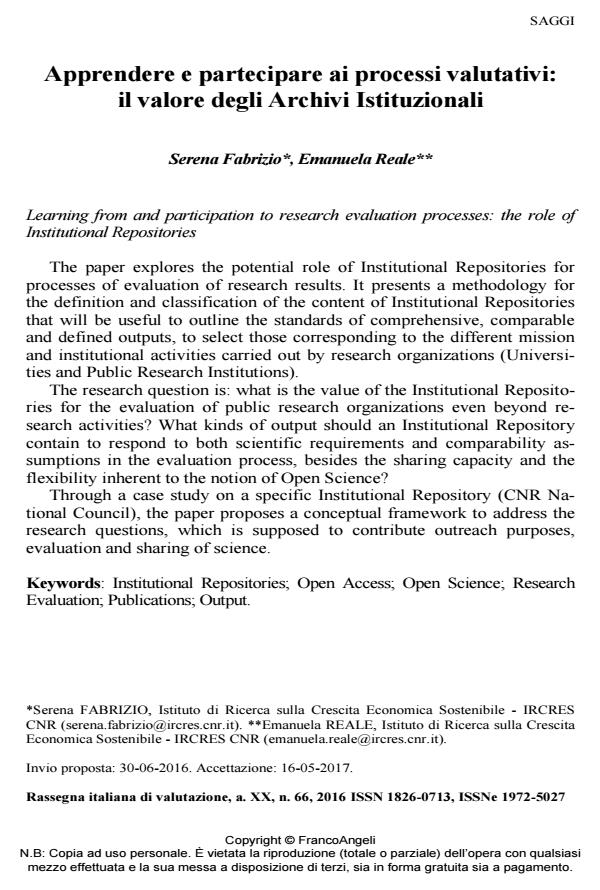Apprendere e partecipare ai processi valutativi: il valore degli Archivi Istituzionali
Titolo Rivista RIV Rassegna Italiana di Valutazione
Autori/Curatori Serena Fabrizio, Emanuela Reale
Anno di pubblicazione 2017 Fascicolo 2016/66
Lingua Italiano Numero pagine 17 P. 103-119 Dimensione file 510 KB
DOI 10.3280/RIV2016-066007
Il DOI è il codice a barre della proprietà intellettuale: per saperne di più
clicca qui
Qui sotto puoi vedere in anteprima la prima pagina di questo articolo.
Se questo articolo ti interessa, lo puoi acquistare (e scaricare in formato pdf) seguendo le facili indicazioni per acquistare il download credit. Acquista Download Credits per scaricare questo Articolo in formato PDF

FrancoAngeli è membro della Publishers International Linking Association, Inc (PILA)associazione indipendente e non profit per facilitare (attraverso i servizi tecnologici implementati da CrossRef.org) l’accesso degli studiosi ai contenuti digitali nelle pubblicazioni professionali e scientifiche
The paper explores the potential role of Institutional Repositories for processes of evaluation of research results. It presents a methodology for the definition and classification of the content of Institutional Repositories that will be useful to outline the standards of comprehensive, comparable and defined outputs, to select those corresponding to the different mission and institutional activities carried out by research organizations (Universities and Public Research Institutions). The research question is: what is the value of the Institutional Repositories for the evaluation of public research organizations even beyond research activities? What kinds of output should an Institutional Repository contain to respond to both scientific requirements and comparability assumptions in the evaluation process, besides the sharing capacity and the flexibility inherent to the notion of Open Science? Through a case study on a specific Institutional Repository (CNR National Council), the paper proposes a conceptual framework to address the research questions, which is supposed to contribute outreach purposes, evaluation and sharing of science.
Parole chiave:Institutional Repositories; Open Access; Open Science; Research Evaluation; Publications; Output.
Serena Fabrizio, Emanuela Reale, Apprendere e partecipare ai processi valutativi: il valore degli Archivi Istituzionali in "RIV Rassegna Italiana di Valutazione" 66/2016, pp 103-119, DOI: 10.3280/RIV2016-066007